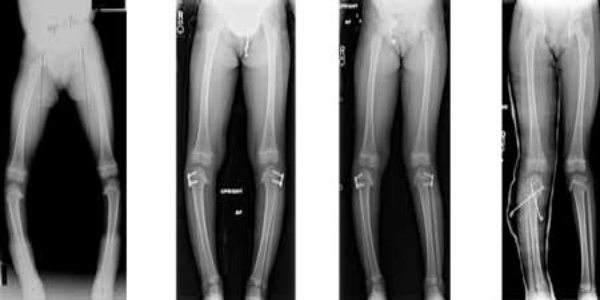What is deformity correction?
Musculoskeletal deformormities are very common among people. The procedure, through which adjusting or modifying the deformity is called deformity correction. Some of the common deformities include- foot deformity, ankle deformity and leg deformity etc, are corrected through deformity correction procedure. Deformity correction can be used to correct defects of any part of the body. It may use surgical assistance or orthotic devices. Common deformities corrected by deformity correction include:
Congenital deformity
Physical traumas
Sports injuries
Accidents
Falls
Deformities caused by diseases such as diabetes, cerebral palsy, obesity and osteomyelitis.
Certain deformities corrected using deformity correction may include the following:
Bow legs correction (Genu varum deformity correction): In the early stages (before 4 years old) of bow legs, wearing leg braces for some weeks of time will improve the condition. If the patient is over 4 years old, the condition may require a surgery. Surgical procedures used to correct bow legs include:
Knee realignment: In this procedure, the knee bones are realigned surgically. Screws, pins, staples and plates are used to fix the realigned bone in the right position.
Osteotomy: This procedure requires an incision through which a small wedge is removed from the fibular or tibia. After that, the bones will be realigned and fixed using pins and other fixational devices.
Knock-knee correction (Genu valgum correction): In most of the cases, knock-knees get corrected themselves in the early childhood. But, certain cases may require surgery. Knee realignment and osteotomy are the surgical options to correct knock-knee deformity.
Nonunion fractures correction: Nonunion fractures are those which are not properly healed even after undergoing treatments. During the deformity correction procedure, the doctor will use external fixation devices to hold the bones in place. This will facilitate healing of the fractured bones. Taylor spatial frame and Ilizarove are the two main devices used for external fixation.
Limb length discrepancy correction: The procedure to correct the congenital limb length variation is known as limb length discrepancy correction. The surgoen will perform a microscopic limb-length surgery.
Correcting dwarfism: Patients with dwarfism can achieve additional skeletal growth through deformity correction procedure. Dwarfism may even lead to other conditions like bow legs and knock-knee, which can also be corrected using deformiy correction procedrue.
Correction of the hammertoe: Hammertoe is a congenital deformity, which can be corrected through an arthroplasty or joint fusion.
Deformity corrections are used to correct congenital as well as developmental muscoloskeletal deformity.
Limb lengthening
Limb lengthening and deformity correction refers to a reconstructive procedure which involves straightening a deformed bone or replacing a missing bone. This procedure is generally performed in children and adults who have variations in the length of their legs caused due to diseases, injuries or congenital abnormalities. Limb lengthening procedure is usually performed using minimally invasive procedures.
Some of the major conditions that can be rectified by limb lengthening and deformity correction procedures include:
- Growth plate injuries
- Bone infections that could cause variations in the length of the legs
- Broken bones caused by trauma
- Replacement of missing bone following the removal of bone tumor and fracture through surgery
The whole process of enhancing the bone length depends on tissue and bone regeneration. The bone, when pulled apart, often tends to regenerate at the rate of about 1mm per day. Bone lengthening primarily has two phases: Distraction phase and Consolidation phase.
While the distraction phase essentially involves lengthening of the bone, the consolidation phase involves calcification and hardening of the new bone which is severely weak owing to a lack of calcium.
Limb Lengthening Devices
Two types of devices are used for limb lengthening namely; External fixators and Internal fixators. The Taylor Spatial Frame and the Ilizarov Frame are external devices that are connected to the bone using wires or threaded pins. The internal devices, particularly intramedullary rods, are positioned inside the body.
Limb lengthening involves the following processes Surgery, Distraction Phase, Consolidation Phase and Removal of the External Fixator.
Certain risks/complications of Limb Lengthening Surgery
- Delayed union or nonunion: This occurs when healing is either delayed or do not take place at all
- Premature consolidation happens when the healing of the bone is either abundant or too fast that it completely hinders or stops the further limb lengthening or correction of deformity.
- Axial deviation: This happens due to unexpected bending of the bone by forces that are unbalanced during the limb lengthening procedure.
- Muscle contractures: This happens when the soft tissues are not able to adapt to the new alterations in bone length.
- Passive stretching and soft tissue mobilization
- Muscle weakness
- Nerve Injury
- Pin site infections
- Blood clots in the leg or lung
Orthopedic Solutions from our Doctors and Hospitals
Deformity Correction Treatment in DelhiDeformity Correction Treatment in ChennaiDeformity Correction Treatment in PuneDeformity Correction Treatment in MumbaiDeformity Correction Treatment in BangaloreDeformity Correction Treatment in KolkataDeformity Correction Treatment in HyderabadDeformity Correction Treatment in KochiDeformity Correction Treatment in AhmedabadDeformity Correction Treatment in Surat
